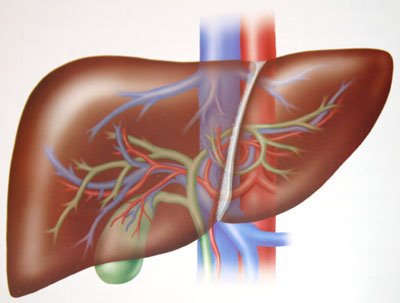The patient was diagnosed with breast cancer in December 2012. She heard ofGanod.. Read More
Before she started usingGanoderma Lucidum Spore Oil Softgels, this patients suga.. Read More
This patient was diagnosed with breast cancer in January of 2011. She was operat.. Read More
In 2009 he left breast was removed, however on a follow up examination in Septem.. Read More

How Ganoderma help in Liver Disease

Role of Ganoderma in Liver Protection
Tragic events often take place around us, changing not only our life but also the lives of our family and friends. Of all the organs in the human body, there is nothing more capable of causing these emergencies than the liver. One reason for this is that the liver does not possess any nerves, so it does not feel pain until it swells to a point that the pressure on nearby organs causes pain in the upper right abdomen. Fulminating hepatitis causes damage to liver cells at a rapid, abrupt speed. This will lead to a failure of cell reproduction, hepatic failure, and inevitably loss of liver function. Survival rates always fall below 30%, and current medical treatment cannot alter this. This type of hepatitis is common in men between 20 and 40 years of age and they leave behind them endless sadness and regret. There is a saying that aptly describes the importance of the liver which states, “A good liver means a colorful life while a poor liver leaves a life of black and white”.
Multifunctional yet a Silent Organ: The Liver
The liver is the largest internal organ in the human body; it weighs 1200 to 1500 grams in an adult, approximately one fiftieth of the body weight. It is a great chemical factory playing several important roles from nutrient absorption, conversion and storage to protein synthesis and digestive system tasks such as clearance of waste and detoxification. These are some of the tasks accomplished by the liver. The following is a brief explanation of some of the main functions of the liver:
1. Metabolism and Storage:
A variety of nutrients that enter the body through food intake, including sugar, protein, fat and vitamins, are all metabolized in the liver. For instance, the liver converts digested starch or saccharides into glycogen for storage. It can also convert digested fatty acid into lipoprotein and cholesterol.
2. Conversion:
Most medicines entering the body have to be transported via the liver in order to exert their effects. Oral medicines will pass into digestive tract, be digested and absorbed via the blood vessels in the intestinal wall, then via the hepatic portal vein (one of the two blood vessels providing nutrition to the liver) into the liver where they will be transformed.
3. Detoxification:
Many and various foreign substances entering the gastrointestinal tract, toxic chemicals (e.g ammonia) synthesized in the gastrointestinal tract and inhaled chemical substances all enter the liver via the hepatic portal vein. After undergoing detoxification in the liver cells they become innocuous and are excreted from the body via the urine, feces or bile.
4. Protein Synthesis:
Protein synthesis is the most important function of the liver. Proteins in blood, especially globulin, albumin and fibrinogen, are all synthesized in the liver. Albumin is the most important of these proteins for if the amount of albumin in blood decreases; osmotic pressure will decline, resulting in swelling of the face or limbs, or even ascites. In addition, the “blood coagulation factor” is produced by the liver. A dysfunctional liver can easily result in bruising and bleeding.
5. Excretion and Involvement in Digestion:
Hemoglobin released by the breakdown of dead red blood cells is converted in the liver into bilirubin, the main pigment of bile. After absorption and processing in the liver cells, bilirubin turns into water-soluble bilirubin (direct bilirubin) and flows in bile through the gallbladder. Via the gallbladder, the bile enters the intestinal tract to aid in digestion and is, finally, excreted from the body. If this function of the liver fails, bile accumulates in the liver and then escapes into the bloodstream causing a yellowish discoloration of the skin (jaundice).
Even though the liver remains reticent, it possesses a strong reproductive capability. As long as it receives sufficient nutrition, its damaged tissues can be repaired quickly. Protein is the most important among all nutrients and so sufficient protein consumption will not only benefit the reproduction of the liver cells but will also slow the degeneration of liver cells. Another important factor in maintaining a healthy liver is to follow a normal daily routine; staying up late will definitely cause harm to the liver. So, people working night shifts, such as assembly line workers, police officers and medical personnel, tend to have a higher abnormal liver function than average.
Main Causes of Liver Disease
 The causes of liver disease can be divided to three main categories: viral, alcoholic, and chemical. The viruses causing damages can be further categorized into A, B, C, D and E type viruses. The most prevalent are hepatitis B and C, especially hepatitis B, whose latent period is extremely long, turning individuals into carriers, a state that may be permanent. Such viruses are easily contracted by casual contact with blood, body fluids or saliva left in food, and are difficult to avoid. Alcoholic damage results form excessive consumption of alcohol and alcohol abuse. The sources of chemical damage include ingestion or injection of excessive amounts of chemical drugs, and consumption of excessive amounts of toxic substances, such as heavy metal or fertilizers in food, and the inhalation of toxic fumes from cigarettes, vehicles or factories. These gases are often neglected as important sources when describing liver disease due to chemicals. Substances such as benzenes and aldehydes, released from solvents (e.g. paints and detergents) into the air, can also cause chemical liver disease. Whatever the cause, damage to liver cells may cause hepatitis and chronic hepatitis may progress to fibrosis or even cirrhosis.
The causes of liver disease can be divided to three main categories: viral, alcoholic, and chemical. The viruses causing damages can be further categorized into A, B, C, D and E type viruses. The most prevalent are hepatitis B and C, especially hepatitis B, whose latent period is extremely long, turning individuals into carriers, a state that may be permanent. Such viruses are easily contracted by casual contact with blood, body fluids or saliva left in food, and are difficult to avoid. Alcoholic damage results form excessive consumption of alcohol and alcohol abuse. The sources of chemical damage include ingestion or injection of excessive amounts of chemical drugs, and consumption of excessive amounts of toxic substances, such as heavy metal or fertilizers in food, and the inhalation of toxic fumes from cigarettes, vehicles or factories. These gases are often neglected as important sources when describing liver disease due to chemicals. Substances such as benzenes and aldehydes, released from solvents (e.g. paints and detergents) into the air, can also cause chemical liver disease. Whatever the cause, damage to liver cells may cause hepatitis and chronic hepatitis may progress to fibrosis or even cirrhosis.
The Dynamic function of the liver is attributed to its basic unit, the liver cell. Damage to liver cells, the restoration of them, producing new cells and replacing old cells constitute a repetitive and on going process in the liver. This restorative processes affects liver function, utilizing up to 10% of it functional capability for maintenance. The relatively low percentage (i.e 10%) indicates the possibility of fibrosis and sclerosis. When the liver sustains damage it will excrete specific enzymes, such as GPT (ALT) and GOT (AST). Abnormal values of these two enzymes indicate a problem in the liver. Normal levels of the two enzymes, however, do not indicate a healthy liver; they only imply initial normal liver function. In many cases of cirrhosis, GPT and GOT levels alone did not detect the disease, but coupled with other examinations, such as ultrasonic scan, alpha-fetoprotein (AFP) and hepatitis B examination, the condition was diagnosed.
Some doctors describe liver cancer as a trilogy: chronic hepatitis followed by cirrhosis, leading, finally to liver cancer. Since the liver lacks nerves, damage at the initial stage may go unrecognized. To date, viral hepatitis remains incurable and can only be controlled by western medicines such as silymarin, the one most commonly used. Providing protection for the liver, rather than waiting to treat liver disorders when they arise, may be the best way forward since it is almost impossible to avoid contact with the toxic substances that may affect the liver.
Research into the effects of Ganoderma on Liver Function
Anecdotal reports from people who have taken ganoderma over a long period of time suggest that ganoderma may have a significant role in protecting the liver. In addition, over 30 scientific studies have been published on the usage of ganoderma in liver protection. Listed below are some of the references on studies published since 2000:



